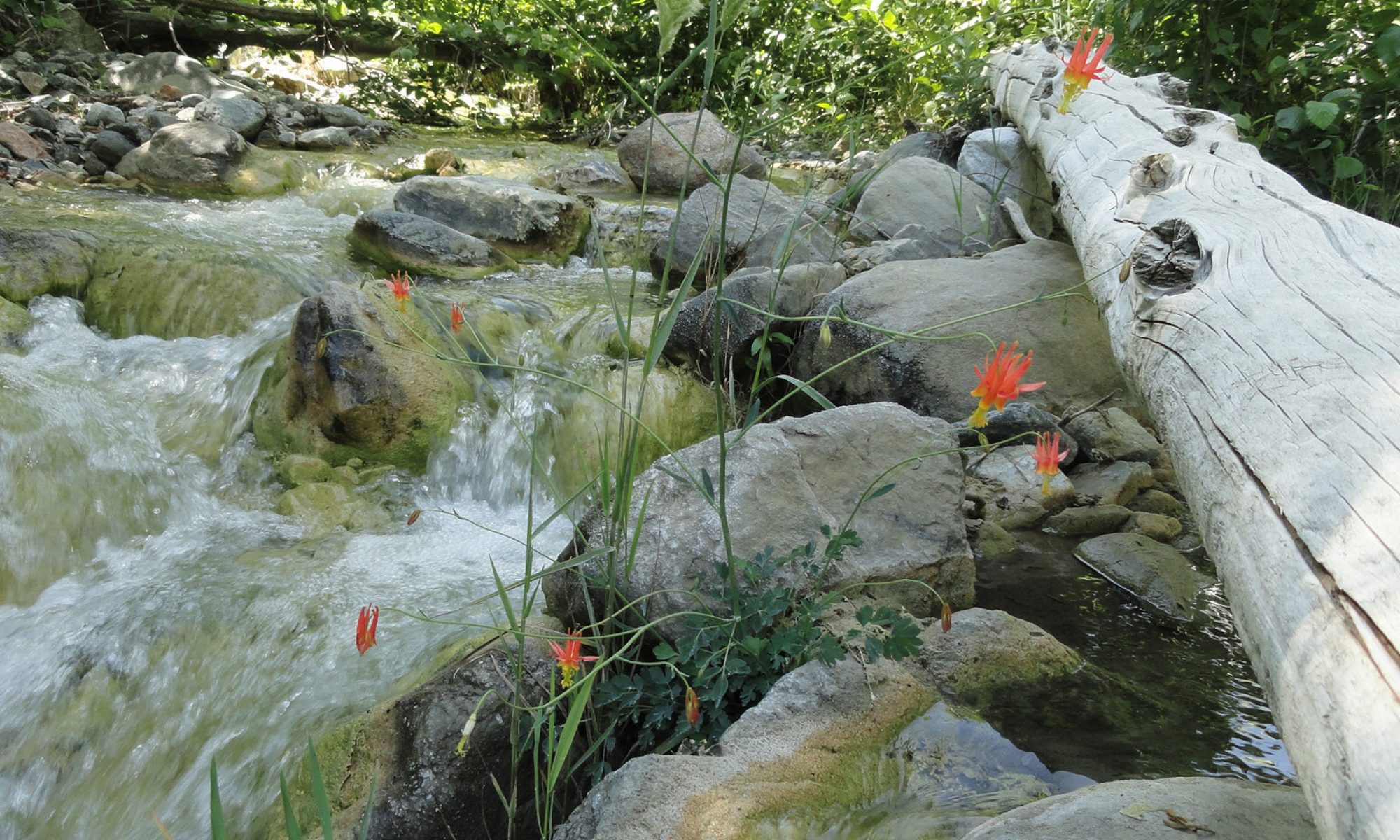Following mountain paths at the speed of walking or running is not only good for your head and your overall health, but may also be a way of reconnecting you to your natural pace and view of the world. As I mentioned in the last blog, I had read “In Praise of Slowness – Challenging the Cult of Speed” by Carl Honore. Not long after this reading, it dawned on me during one of my “commute hikes” to Sturtevant Camp, just how frequently we travel in our cars at 60 to 70 miles per hour without thinking a thing about it. After arriving at Chantry Flats and heading into the Canyon, we’ve now dropped our speed down to a safe and sane 2 to 3 miles per hour. If you’re running, then double or or even triple the speed. In any case, the difference in percentage terms between driving and getting yourself around on foot is startling. I chose 3 mph as an average walking speed for most of the trails that cover our front country canyons of the San Gabriel mountains. If I’m driving a conservative 60 mph or so (better be in the slow lane), then I’ve increased my travel speed 2000% or greater! Now, I’m not even talking about the speed of flying in airplanes or jets, which would bump this percentage increase to 10,000% or greater…. All this change is just land-based travel.

We’ve been driving mass-produced cars for just over a century now. Henry Ford came out with his Model T for the masses in 1908 which isn’t all that long ago – really. And the freeway / highway system as we understand it today in the United States didn’t exist until the Interstate Highway Act of 1956. Prior to that, many good roads existed under their own numbering system, yet did not connect to any grand scheme for the cross-country traveler. So, driving 60 mph or greater, was not a long distance assumption that could be made in the lower 48 states. Even though I use the 60 mph speed as a benchmark of what we do all the time without really thinking.
Looking back over the development of humans as a species (Homo sapiens), the best we have to go on as of this writing is that our species evolved into “anatomical modernity approximately” 200,000 years ago. This “Out of Africa” theory is widely supported and dates back to Charles Darwin’s book, “Descent of Man” from 1871. DNA analysis now corroborates this theory. Looking at our “behavioral modernity”, the current take on this is approximately 50,000 years ago. See Stephen Oppenheimer’s “Out of Eden” for an elaboration on the development of music, religion and other human developments. Wikipedia is a good place to start on both these themes of human origin.
Let’s say we take the 50,000 B.C. benchmark as the beginning of human development and social tradition. That’s a good long time to discover and develop our view of the planet’s surface with all its’ variations in terrain and climate. It’s also a good period of time for the development of certain forms of muscle development, navigational skills and memory for covering different landscapes and all the textures that come with it. You could say that our collective DNA, a redundancy in definition, has compiled all these traits and skills as they relate to our relationship within the context of walking, climbing, running and swimming. This is a collective conscience that we all carry and continue to develop.
Finally, all this takes us to another facet of the 2000% rule….. Most humans, in developed nations, such as the United States – live approximately 72-78 years on average. Pushing that number to 80 years, there are about 625 human lifetimes, back-to-back, in 50,000 years of time. On average, human generations are about 20-22 years ion length (see: Strauss & Howe’s “Generations – the Generational Diagonal”) if you look at American generational theory for the last 500 years. Therefore, in numbers of generations, that figure jumps to nearly 2,500 generations experiencing this earth and its’ myriad opportunities and challenges in 50,000 years. For nearly all this time, we’ve been living at 2 to 3 mph on land, with the exception of running.
That said, we’ve increased our daily speed 2000% in 0.2% (1/500th) of the time we’ve developed into modernity! There is no curve, just straight up.
This increase in daily speed is beyond striking, perhaps even challenging to the biology of a person. Not that we can’t adapt, most of the time we have, however, it isn’t without its’ shadow. It’s hard to stay present to the earth as our ancestral selves remember it when we’re ramping up our speeds routinely and our biology lagging far behind in the grand scheme of things. We’re not even considering the effects of instantaneous forms of communication that we take for granted! Hiking, walking or running, however you do it, pulls us back to the rhythm and pace that we’ve adapted to over the tens of thousands of years. Spend part of your day on the trails up and down our canyons to reconnect to the expansive part of you that these modern times have yet to earn. As the adage goes: A person sees more in a mile of walking than 100 miles of driving. You might just remember and enjoy more of it, too!
